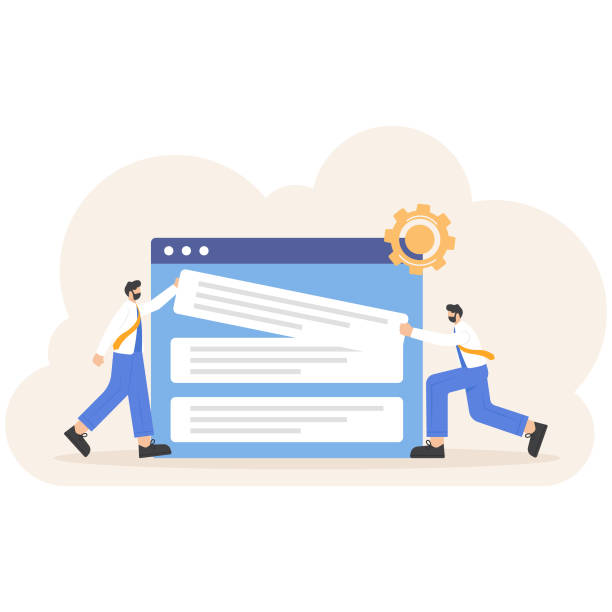An Introduction to the Critical Importance of Fast Website Design

In the current digital age, where users expect a smooth and uninterrupted experience, #fast website design is no longer a competitive advantage, but an absolute necessity.
Website loading speed not only directly impacts user satisfaction but also serves as a crucial factor in search engine rankings and, ultimately, the success of your online business.
A slow website can lead to #increased user bounce rates, #reduced conversions, and lost customers.
This simple truth highlights the immense importance of investing in site speed optimization techniques.
Have you ever considered the cost that every second of delay in your site’s loading can have for your business? Many studies show that even small delays can significantly impact revenue and user engagement.
For this reason, web design professionals are increasingly focusing on improving loading speed.
The ultimate goal is to provide an exceptional user experience that encourages users to revisit.
Fast website design is the cornerstone of a successful and sustainable online presence that can make a significant difference in your bottom line.
Do you have an online store but your sales aren’t what you expect? Rasaweb solves your problem forever with professional e-commerce website design!
✅ Significant increase in conversion rates and sales
✅ Unparalleled user experience for your customers
⚡ Click here to get a free consultation with Rasaweb!
Key Principles for Achieving Fast and Efficient Website Design

Achieving fast website design requires adherence to a set of technical and optimization principles that begin from the early stages of development.
One of the most important of these principles is image optimization.
High-volume images can severely reduce site loading speed; therefore, compression and the use of appropriate formats (such as WebP) are essential.
Caching, whether through the browser or the server, is another crucial technique that eliminates the need to reload repetitive information by temporarily storing data.
Also, reducing HTTP requests and combining CSS and JavaScript files to lessen the number of requests to the server plays a significant role in speeding up loading.
The use of Content Delivery Networks (CDN) also helps improve speed for users worldwide, as content is delivered from the server closest to the user.
Cleaning up unused code and optimizing the database are also specialized measures that help increase overall site efficiency and speed.
These comprehensive and specialized approaches form the foundation of a high-speed loading website.
Advanced Tools and Technologies in Fast Website Design

In the path to achieving fast website design, leveraging the right tools and technologies makes a significant difference.
Content Management Systems (CMS) like WordPress, Joomla, or Drupal offer many features for speed optimization, but choosing lightweight and speed-optimized themes and plugins is of paramount importance.
Modern JavaScript frameworks such as React, Vue.js, and Angular can provide very fast user experiences by utilizing client-side rendering and internal optimizations.
Using HTTP/2 and HTTP/3 protocols, which are designed for better performance, instead of HTTP/1.1, can dramatically increase data transfer speeds.
Furthermore, analytical tools like Google PageSpeed Insights, GTmetrix, and WebPageTest provide valuable insights into the site’s speed weaknesses and strengths.
These tools analyze site code, images, resources, and servers, suggesting practical solutions for improving loading speed.
This analytical and data-driven approach helps development teams focus strategically on the areas that have the greatest impact on speed improvement.
Below, a comparative table of some of the most popular CMSs in terms of speed potential is presented:
| CMS | Speed Advantages | Potential Challenges |
|---|---|---|
| WordPress | Strong caching plugins, CDN integrations | Heavy plugins, unoptimized themes |
| Joomla | Internal caching, image optimization capabilities | More complex configuration, requires technical knowledge |
| Drupal | High scalability, powerful caching system | High complexity, suitable for large projects |
The Role of Server and Hosting in Website Loading Speed

Choosing the right server and hosting is one of the most important factors in achieving fast website design.
Many businesses initially opt for cheaper options, but this decision often comes at the expense of site speed and performance.
The quality of server hardware, disk type (SSD instead of HDD), and the amount of RAM and CPU allocated to your hosting account all affect server response speed and ultimately site loading speed.
Shared hosting, while cost-effective, may result in lower speeds due to sharing resources with other websites.
In contrast, VPS (Virtual Private Server) or dedicated servers provide more control over resources and configuration, usually offering higher speeds.
Server location also matters; a server closer to your target audience reduces latency and improves loading speed.
Using a CDN, even with good hosting, can help distribute content worldwide and increase speed for users from different locations.
A reputable hosting provider with strong technical support and continuous server monitoring can ensure the stability and speed of your website.
This often overlooked yet vital aspect is the foundation of a high-performance website.
Do your online store visitors leave before making a purchase? Don’t worry anymore! With Rasaweb’s professional e-commerce website design services, solve the problem of not converting visitors into customers forever!
✅ Significant increase in conversion rates and sales
✅ An unparalleled and engaging user experience
⚡ Contact us now for a free consultation!
User Experience and its Relationship with Fast Website Design
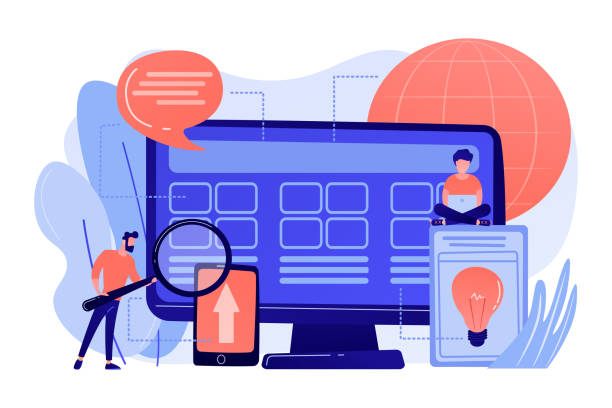
Site loading speed directly impacts user experience (UX), and this is one of the reasons why fast website design is so important.
Today’s users are impatient and expect content to load instantly.
Research shows that every second of delay in page loading can reduce conversion rates and significantly increase the bounce rate.
A slow website not only frustrates users but also questions your brand’s credibility.
In contrast, a high-speed loading website conveys a sense of trust and professionalism.
Users are more inclined to browse more pages, interact with content, and make purchases or complete forms on a fast site.
This issue becomes even more critical on mobile devices where internet connectivity may be less stable.
Responsiveness of the site and its adaptability to different screen sizes, alongside speed, provides a seamless user experience.
Optimizing for Google’s Core Web Vitals (LCP, FID, CLS) also directly helps improve UX and, consequently, achieve fast website design.
This user-centric approach is not only beneficial for users but also crucial for your SEO and business results.
SEO Benefits of Fast Website Design
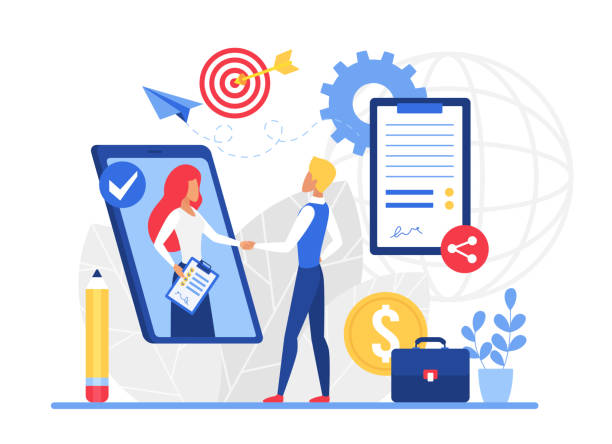
One of the most important reasons for focusing on fast website design is its direct impact on Search Engine Optimization (SEO).
Google has explicitly stated that page loading speed is a ranking factor, especially with the introduction of Core Web Vitals.
Websites that load faster offer a better user experience, which in turn leads to a reduction in bounce rate and an increase in user time spent on the site.
These signals indicate to search engines that your content is valuable and should rank higher.
Furthermore, search engine crawlers prefer to crawl fast sites more frequently and efficiently, which helps in faster indexing of new content and updates.
Speed optimization includes aspects such as code compression (HTML, CSS, JavaScript), image optimization, leveraging caching, and using a CDN, all of which contribute to improving SEO rankings.
In a competitive market where hundreds or thousands of websites compete for a single keyword, even a slight improvement in loading speed can make a significant difference in your position in search results.
Therefore, fast website design is not only beneficial for users but also a vital strategy for SEO success.
Common Mistakes and Solutions to Avoid Them in Fast Website Design

Achieving fast website design can come with challenges, and there are common mistakes that can negate your efforts.
One such mistake is the excessive use of heavy and unnecessary plugins and scripts, which can heavily consume server resources and reduce site speed.
The solution is to use only essential plugins and regularly review and deactivate them.
Lack of image optimization is also a major error; images with large dimensions and inappropriate formats can astronomically increase page size.
To resolve this, always compress images, use correct dimensions, and consider modern formats like WebP.
Failure to utilize server-side and browser caching is another mistake that causes all content to be reloaded every time a user visits the site.
Proper caching configuration eliminates these repetitive loadings.
Choosing unsuitable and cheap hosting that lacks sufficient resources also severely impacts site speed.
Investing in quality hosting that matches your website’s needs is essential.
Additionally, failing to optimize HTML, CSS, and JavaScript code through compression and removing whitespace can lead to slower loading.
Rectifying these mistakes are important steps towards ensuring a fast and efficient website design.
The table below highlights some of these mistakes and solutions to address them:
| Common Mistake | Description | Optimization Solution |
|---|---|---|
| High-volume images | Using uncompressed images with large dimensions | Image compression, using WebP, Lazy Load |
| Too many plugins and scripts | Installing unnecessary and heavy plugins | Deleting inactive plugins, choosing lightweight plugins |
| No caching | Not using browser and server caching | Enabling caching with appropriate tools |
| Untidy and uncompressed code | HTML, CSS, and JS codes with excessive whitespace | Minifying codes, combining files |
Continuous Monitoring and Measurement of Website Speed
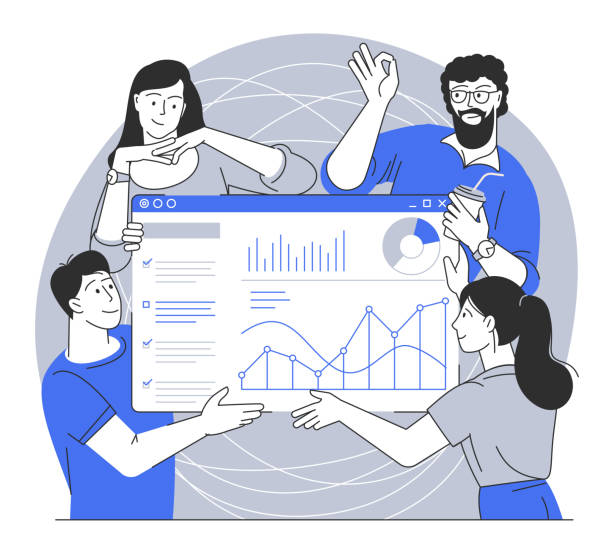
After performing optimizations for fast website design, the next important step is continuous monitoring and measurement of website speed.
A website’s speed can fluctuate for various reasons, such as content updates, new plugin installations, or traffic changes.
Numerous free and paid tools exist for this purpose, among the most important of which are Google PageSpeed Insights, GTmetrix, and WebPageTest.
These tools not only show your site’s speed score but also provide detailed reports on areas that need improvement; including Time to First Byte (TTFB), Largest Contentful Paint (LCP), First Input Delay (FID), and Cumulative Layout Shift (CLS), all of which are Google’s Core Web Vitals.
Implementing Real User Monitoring (RUM) tools can also help you track the actual speed experience of users.
Continuous monitoring allows you to react quickly to any speed drops and resolve issues before they negatively impact user experience and SEO.
This data-driven approach ensures that your site always remains in its best performance state and maintains the benefits of fast website design.
Are your online sales not what you expect? With Rasaweb, solve the problem of low sales and poor user experience forever!
✅ Increase visitor-to-customer conversion rates
✅ Create an enjoyable user experience and boost customer trust
⚡ Act now to get a free consultation!
The Future of Web Design and Emphasis on Speed

The future of web design is increasingly intertwined with speed.
With the growing prevalence of mobile devices and users’ expectations for instant access to information, fast website design will become even more of a standard.
Technologies like Progressive Web Apps (PWAs), which combine the best features of web and native applications, promise extremely fast and offline user experiences.
These technologies enable websites to be installed on the user’s device like mobile apps, offering high speed and performance.
Furthermore, the emergence of the Internet of Things (IoT) and the need for data transfer with minimal latency increases the importance of speed in web architecture.
Continuous improvements in web standards, such as HTTP/3 built on the QUIC protocol which significantly reduces latency, will also help accelerate the web even further.
Developers who pay attention to these trends and consistently focus on speed optimization will be at the forefront of innovation and success.
This is good news for users and businesses, as it means faster and more efficient access to online information and services.
Case Study: Fast Website Design for an Online Store
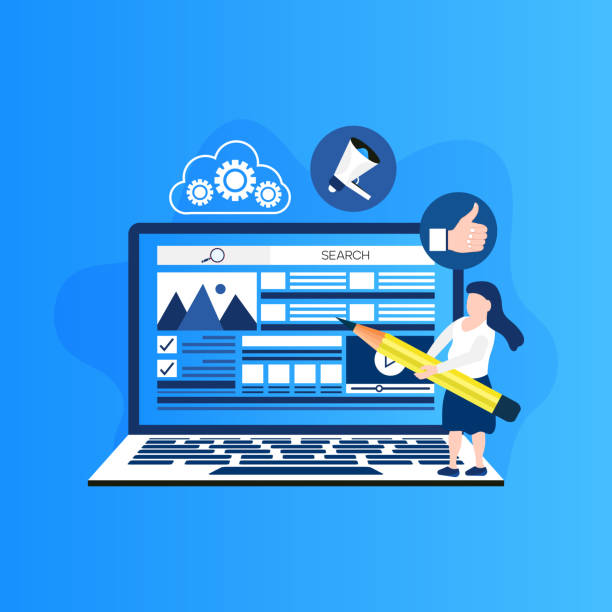
To better understand the importance of fast website design, let’s examine a real case: an online store that was struggling with slow loading speeds.
This store faced a high bounce rate of over 80% on product pages and a significant decrease in conversion rates.
After a comprehensive analysis, the main issues were identified as: high-volume and unoptimized product images, lack of caching, and a shared hosting server with limited resources.
The development team decided to take the following actions: First, all product images were compressed and converted to WebP format, and Lazy Load functionality was used for progressive image loading.
Next, a powerful caching plugin was installed and configured to store static resources in users’ browsers.
Finally, the store was migrated to a VPS server with dedicated resources, and a CDN was activated.
The results were astounding: product page loading times decreased from approximately 10 seconds to under 2 seconds.
The bounce rate dropped to less than 30%, and the conversion rate increased by more than 50%.
This example demonstrates how investing in fast website design can directly and positively impact the key performance indicators of an online business and lead to remarkable success.
This transformation is a testament to the power of speed optimization.
Frequently Asked Questions
| Question | Answer |
|---|---|
| What is fast website design? | The process of building websites that load quickly. |
| Why is website speed important? | It improves user experience, positively impacts SEO, and increases conversion rates. |
| What factors affect site loading speed? | Server speed, image size, code optimization, use of browser caching. |
| How can website speed be increased? | Optimizing images, compressing CSS and JavaScript files, using a CDN, and choosing suitable hosting. |
| What are common tools for testing site speed? | Google PageSpeed Insights, GTmetrix, Pingdom Tools. |
| Does server’s geographical location affect speed? | Yes, less distance between the user and the server leads to less latency and faster speed. |
| What does image optimization mean? | Reducing the file size of images without significantly reducing their quality. |
| What is browser caching and how does it help speed? | Temporarily storing website resources (like images, CSS, and JS files) in the user’s browser for faster loading on subsequent visits. |
| What is the impact of site speed on SEO? | Google considers site speed as a ranking factor; faster sites usually achieve better rankings. |
| How can CSS and JavaScript files be optimized? | By minifying and concatenating files to reduce size and the number of requests. |
And other services of Rasaweb Advertising Agency in the field of advertising:
Smart Digital Advertising: Revolutionize digital branding with the help of SEO-driven content strategy.
Smart Google Ads: Professional optimization for campaign management using real data.
Smart Content Strategy: Designed for businesses seeking user engagement through attractive UI design.
Smart Advertising Campaign: A combination of creativity and technology for customer acquisition through intelligent data analysis.
Smart Brand Identity: A professional solution for user engagement with a focus on custom programming.
And over a hundred other services in the field of internet advertising, advertising consultation, and organizational solutions.
Internet Advertising | Advertising Strategy | Advertorials
Resources
The Importance of Site Speed in SEO
The Impact of Site Load Speed on User Experience
How to Increase Site Speed
Important Tips for Optimized Website Design
? Are you ready to transform your business in the digital world?
With Rasaweb Afarin digital marketing agency, you no longer have to worry about your business not being seen. With our expertise in areas such as WordPress website design, Search Engine Optimization (SEO), and comprehensive digital marketing strategies, we build a strong bridge between you and your customers.
Contact us today for a free consultation and secure your business’s digital future!
📍 Tehran, Mirdamad Street, next to Central Bank, Southern Kazeroun Alley, Ramin Alley, No. 6



